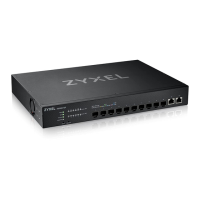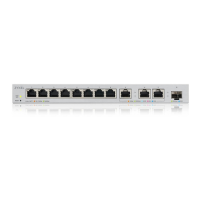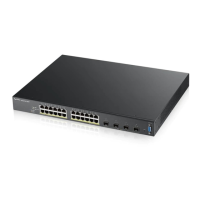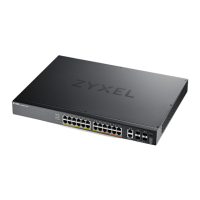Chapter 34 Link Aggregation
XMG1930 Series User’s Guide
225
operational port fails, then one of the “standby” ports become operational without user intervention.
Please note that:
• You must connect all ports point-to-point to the same Ethernet switch and configure the ports for
LACP trunking.
• LACP only works on full-duplex links.
• All ports in the same trunk group must have the same media type, speed, duplex mode and flow
control settings.
Configure trunk groups or LACP before you connect the Ethernet switch to avoid causing network
topology loops.
Link Aggregation ID
LACP aggregation ID consists of the following information
1
:
Traffic Distribution Criteria
The Switch supports both unicast and non-unicast traffic (broadcast and multicast) network load sharing
over link aggregation. Load sharing works by statically splitting the traffic based on source or destination
IP/MAC address, and then distributing the load across multiple paths. In link aggregation, this allows the
trunk group (ports) to transmit data as one logical link to a single or group of hosts on the network.
Unicast and non-unicast traffic network load sharing over link aggregation (trunking) is enabled by
default.
34.2 Link Aggregation Status
Click PORT > Link Aggregation > Link Aggregation Status in the navigation panel to display the screen as
shown. See Section 34.1 on page 224 for more information.
Table 103 Link Aggregation ID: Local Switch
SYSTEM PRIORITY MAC ADDRESS KEY PORT PRIORITY PORT NUMBER
0000 00-00-00-00-00-00 0000 00 0000
Table 104 Link Aggregation ID: Peer Switch
SYSTEM PRIORITY MAC ADDRESS KEY PORT PRIORITY PORT NUMBER
0000 00-00-00-00-00-00 0000 00 0000
1. Port Priority and Port Number are 0 as it is the aggregator ID for the trunk group, not the individual port.

